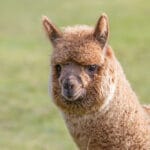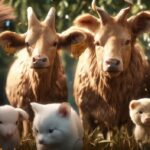Have you ever coveted those super-warm, comfortable jackets? The ones that make you feel equipped to tackle any weather? Often, that warmth comes with ethical concerns, particularly when real animal fur is involved. This article examines brands like Baerskin, known for their fleece jackets, to see if their claims of quality and comfort are justified. We’ll investigate their materials, construction, and ethical considerations, helping you make informed buying decisions. We’ll explore the qualities of a good jacket, what makes them sustainable, and help you decide if a Baerskin jacket – or a similar product – is the right choice for you.
Fleece Comfort: Unveiling Premium Fleece Jackets
Let’s delve into fleece jackets. Specifically, we’ll look at brands such as Baerskin and analyze whether their jackets live up to the hype. You’ve probably encountered advertisements promising cozy, warm jackets and ultimate comfort. But does the reality align with the marketing? Let’s dive in and explore the comfort claims.
The Fabric: Dissecting Fleece Material
Many popular jacket brands often boast a specified gsm (grams per square meter) for their fleece. That number, 330gsm, indicates the fabric’s weight, generally suggesting a warmer, more substantial jacket. However, some brands do not fully disclose the composition of that blend. These companies often highlight “finest materials,” but specifics about the mix of wool, polyester, or recycled fibers are vague. This lack of transparency can be concerning. Knowing a jacket’s composition helps assess its quality and environmental impact. Shouldn’t consumers have access to this information to evaluate the jacket’s attributes and sustainability accurately?
Design and Fit: Balancing Style and Practicality
These brands often aim for versatility, promising a jacket suitable for a casual city outing or an outdoor adventure. They might describe the fit in different ways, perhaps suggesting it’s tailored for a specific body type. Here’s where visuals are essential. Seeing how the fit looks on diverse body types is crucial. Does it allow for a full range of motion during activities? Marketing materials might suggest comfort, but user reviews and images provide a more complete picture.
Identifying the Ideal Customer
The description of the fit suggests a target audience, perhaps individuals with active lifestyles who value performance and style. However, is this target audience comprehensive enough? Brands offering inclusive sizing options provide competition. Expanding the view of potential customers is essential for broader market success.
Ethics and Sustainability: Considering Environmental Impact
The brand name and marketing materials can evoke images of animal products, real or not. While a brand might assert the absence of real hides, questions about their practices remain. The apparel market presents a contrast between real animal fur and synthetic alternatives. We need transparency. Where do these companies source their materials? Are their manufacturing processes environmentally sound? Consumers are increasingly concerned about sustainability and ethical production.
- Consumers are increasingly concerned about sustainable and ethical production.
- Lack of transparency poses a challenge to building customer trust.
- Understanding the origin and environmental footprint of materials is paramount.
Consumers should be aware of these ethical considerations when buying clothing.
The Competitive Landscape: Distinguishing Brands From Others
The apparel market is saturated. High-quality fleece jackets abound. What differentiates a brand? Innovative features, verifiable materials, or a compelling narrative that emphasizes ethical and sustainable practices can help. Examining competitors’ strategies and consumer preferences is crucial. A unique selling proposition, something that sets their jackets apart, is essential. Only then will customers confidently choose them over other options.
Recommendations for Sustained Success and Brand Loyalty
To thrive, brands can:
| Recommendation Category | Specific Action | Potential Outcome | Potential Challenges |
|---|---|---|---|
| Transparency | Fully disclose material composition, sourcing, and manufacturing; allow traceability of materials | Increased consumer trust and brand loyalty; enhanced credibility | Requires effort; potential for revealing weaknesses |
| Ethical Sourcing | Commit to sustainable practices; adopt ethical certifications | Positive brand image; reduced ethical concerns; improved marketing potential | Identifying suppliers can be difficult; maintaining standards is ongoing |
| Market Research | Understand target audiences regarding fit and design. | More effective marketing; improved product development | Requires investment in data collection and analysis; interpretation of findings |
| Product Development | Offer various styles and expand size range to cater to a broader customer base | Wider market appeal; increased sales | Requires significant investment in design and production |
| Brand Storytelling | Communicate brand values and promote ethical practices | Stronger brand identity; enhanced emotional connection with consumers | Requires expertise and consistent messaging |
The future depends on boosting transparency, demonstrating ethical commitment, and connecting with consumers through a compelling narrative.
Verifying Ethical Sourcing in Fleece Apparel
Finding genuinely ethical fleece apparel can be challenging, but manageable. This guide provides the tools to make informed purchasing decisions.
Understanding Fleece and Its Significance
“Gsm” refers to the fabric weight – grams per square meter. Higher gsm usually indicates a thicker, warmer, and more durable fleece. Weight alone doesn’t ensure quality or ethical sourcing.
Verifying Ethical Sourcing
This process requires research and critical thinking. Here’s a step-by-step approach:
- Brand Research: Begin with the brand by assessing whether it has a detailed sustainability page and openly discusses its supply chain.
- Certifications: Examine certifications like GOTS (Global Organic Textile Standard), OEKO-TEX Standard 100, or Fair Trade Certified which confirm adherence to social and environmental standards.
- Transparency: A brand should share information about its factories, labor practices, and environmental impact.
- Material Traceability: Can the brand trace the fleece material back to its origin and confirm whether it uses recycled materials?
- Independent Audits: Confirm that the brand has undergone independent audits of its facilities and supply chains by reputable third-party organizations that assess labor conditions and environmental impact.
- Customer Reviews: Analyze reviews and social media comments to evaluate the brand’s reputation.
- Ask Questions: Contact the brand directly with specific questions about its sourcing practices.
Comparing Fleece Sources: Pros and Cons
| Fleece Source | Pros | Cons |
|---|---|---|
| Recycled Polyester | Eco-friendly and reduces waste by using diverted plastic from landfills and oceans, it also reduces reliance on new petroleum resources. | May still involve microplastic issues during washing; quality depends on the recycling process. |
| Organic Cotton | Sustainable farming promotes soil health and offers a soft comfortable feel. | Can be more expensive; requires significant water resources; may be less durable than synthetic options. |
| Conventional Polyester | Durable and affordable, widely available. | Derived from petroleum, not biodegradable, contributes to environmental pollution, and involves microplastic shedding. |
| Wool | Natural, renewable, warm, and moisture-wicking. | Can be expensive, requires ethical animal treatment certification, and may cause allergic reactions in some individuals . |
| Bamboo Fleece | Soft, breathable, and fast-growing renewable resource. | Processing can involve chemicals; less durable than other options; may not be as warm as wool or synthetic fleece alternatives. |
- Discover Life in a Medieval Castle: Beyond Battles & Banquets: Unveiling Daily Life - August 2, 2025
- Scipio Africanus: Hannibal’s Nemesis: Rise, Fall, and Legacy - August 2, 2025
- Unveiling Superorganisms: Are Ant Colonies One Mind? - August 2, 2025















